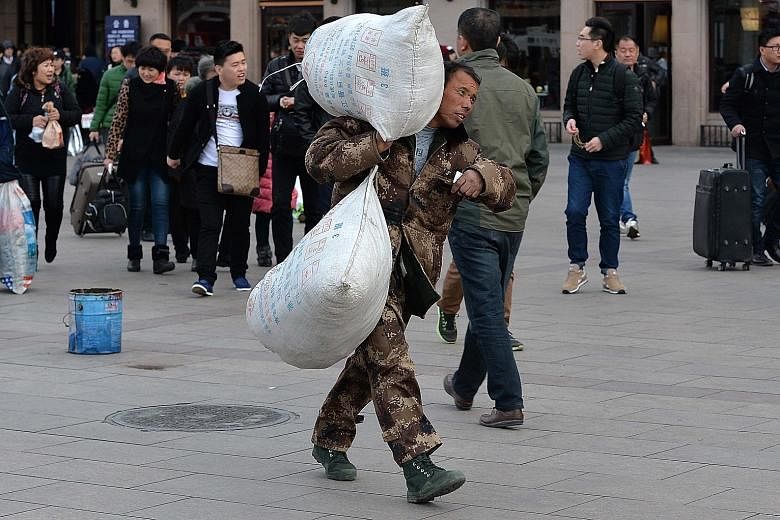BEIJING • Two years after changes to China's controversial hukou system were first announced, the Chinese capital has finally adopted much-needed reforms to the household registration system.
Beijing announced on Monday it would stop classifying its residents as either urban or rural, reported Xinhua news agency.
New policies on education, health and family planning, social security and property that cater to the unified household registration system would be drawn up, reported South China Morning Post.
Beijing's move, according to Cai- xin news website, will affect 2.9 million who are now categorised as agricultural or rural workers.
Even if they are working and living in urban areas, these workers do not enjoy the same state-subsidised access to social benefits such as education and healthcare as holders of urban hukous.
Beijing's move will help narrow the rural-urban gap and pave the way for more equal social benefits.
-
A system that failed to work
-
China's controversial hukou system, which dates back to the 1950s, has split its 1.3 billion people along urban-rural lines.It was designed to keep people from moving to the cities and forming slums that plague other developing countries, but critics say the system has failed to keep up with rapid urbanisation.
A person's hukou is issued at birth, and he can get state-subsidised access to social welfare benefits only in his home province. This has made many rural migrants and their children second-class citizens in their urban homes.
Between 1990 and the end of 2015, the proportion of China's population living in urban areas jumped from 26 per cent to 56 per cent.
Across China, around 750 million people live in cities and 250 million are migrant workers.
Some cities have begun allowing migrant workers to register as residents in a bid to secure labour. But overall, the push to provide more equal treatment for all citizens is moving at a snail's pace, according to Nikkei Asian Review.
There are also concerns among rural residents that they could lose their land under the hukou reforms. Technically all Chinese land is collectively owned by farmers or by the state.
In 2014, China's Cabinet, or the State Council, pledged an overhaul of the household registration system that would scrap the urban and rural household classifications.
The change was part of the country's urbanisation push to have 60 per cent of its population - or an additional 100 million rural residents - living in cities by 2020.
Beijing, which has lagged behind other major cities such as Shanghai and Guangzhou in hukou reforms, is the latest region to adopt the new guidelines. Out of China's 31 provinces, regions and muncipalities, only the Tibet Autonomous Region still maintains the distinction between rural and urban residents.
Mr Zhang Yinghong of Beijing's rural economy research centre said the rural-urban hukou system was important in controlling the size of cities during the planned economy period.
But as the market economy developed, the system hampered population flow and resulted in disparities, he told Xinhua news agency.
Many of those who had moved to the cities in recent years have resettled in small urban centres near their home villages.
For cities with populations of more than five million, migrant workers face a tough system which awards points based on age, education, expertise and other criteria.

